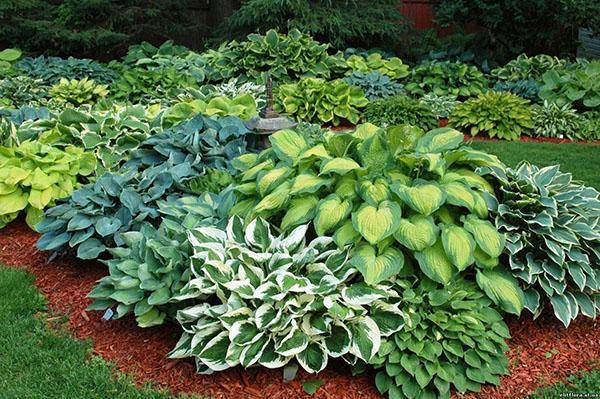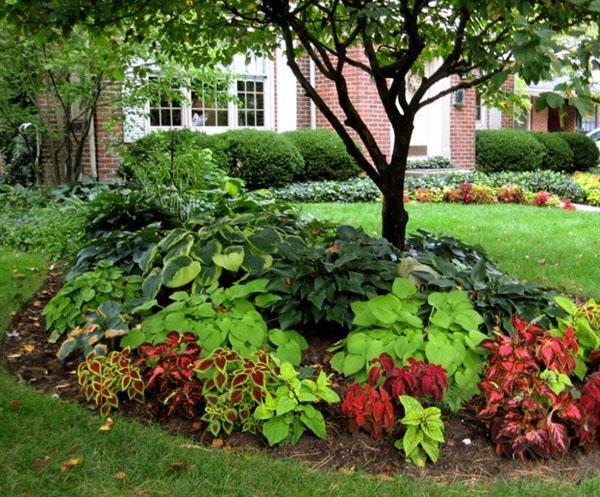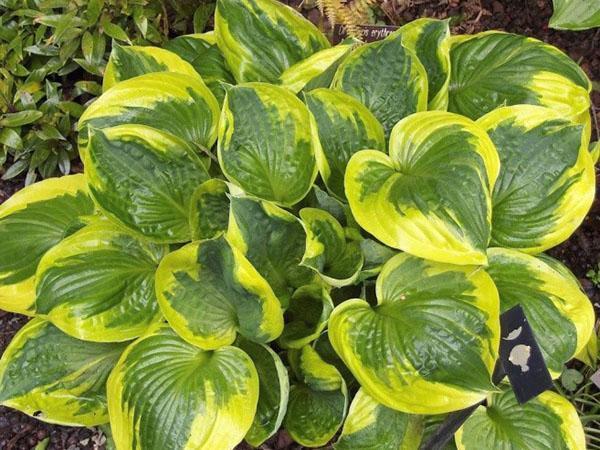Planting hosts of different varieties and caring for it in the open field will give good results.
 Every owner of a garden plot dreams of making it attractive and unique. They can help with this hosts, landing and care in the open field, which does not require serious skills and knowledge. This plant is considered unpretentious. It can grow with equal success in the shade and in sunny places. Its colorful, eye-catching leaves bring uniqueness to any flower garden. In order for plants to fully develop and please the eye, you must follow a few simple recommendations.
Every owner of a garden plot dreams of making it attractive and unique. They can help with this hosts, landing and care in the open field, which does not require serious skills and knowledge. This plant is considered unpretentious. It can grow with equal success in the shade and in sunny places. Its colorful, eye-catching leaves bring uniqueness to any flower garden. In order for plants to fully develop and please the eye, you must follow a few simple recommendations.
How to fit the host correctly?

- Host location.
- Soil composition.
- Landing rules.
 Only when all these aspects are taken into account will it be possible to plant the plant so that it pleases the owners for more than one year. To create a beautiful flower garden it should also be taken into account that different host varieties can grow in different ways. Therefore, before planting, be sure to familiarize yourself with the features of the variety you have chosen.
Only when all these aspects are taken into account will it be possible to plant the plant so that it pleases the owners for more than one year. To create a beautiful flower garden it should also be taken into account that different host varieties can grow in different ways. Therefore, before planting, be sure to familiarize yourself with the features of the variety you have chosen.
Read: Monarda - planting and care in the open field
Choosing the best place
 Planting hosts in the spring in the ground is allowed both in darkened and sunny places. This is largely determined by the plant variety. The main rule in this case is not to plant hosts in the shade of dense tree crowns. In such a place, they stop growing and lose the intensity of the color of the leaves. You can choose a site based on color:
Planting hosts in the spring in the ground is allowed both in darkened and sunny places. This is largely determined by the plant variety. The main rule in this case is not to plant hosts in the shade of dense tree crowns. In such a place, they stop growing and lose the intensity of the color of the leaves. You can choose a site based on color:
- Plants with dark foliage are best planted near apple, pear, or other small-crowned trees.
- If golden or white streaks are present in the color of the leaf plate, then they need to be placed on the east side under low plantings. With a lack of light, they can lose their decorative effect.
After you decide on the choice of a site for planting, it must be cleaned of dirt and dug up. Try to completely get rid of weeds that will take away nutrients.
Planting a host in open ground in Siberia should be carried out exclusively in the spring. In other regions, autumn planting is also allowed.
Soil preparation

Hosts are not demanding on soil quality. For full development, they need a minimum of nutrients. If sand predominates in the soil, a small amount will be required peat... It will help eliminate the leaching of salts and minerals.
When the soil is too poor, it is necessary to apply mineral fertilizers. Today, a wide range of specialized preparations is on sale. When using them, you must follow the instructions and do not exceed the dosage.
Basic landing rules
 The method of planting and caring for hosts in the open field will also depend on the type of planting material. It is best to choose instances with a closed root system. It is enough to gently remove them from the container without damaging the rhizome and plant them in a previously prepared hole.
The method of planting and caring for hosts in the open field will also depend on the type of planting material. It is best to choose instances with a closed root system. It is enough to gently remove them from the container without damaging the rhizome and plant them in a previously prepared hole.
Plants with an open root system take root less well. When choosing such a planting material, it is necessary to carefully examine the root system. It should be alive with no signs of rotting. After planting such a host in the hole, it is watered.In this case, the plant must be placed so that the bud is above the ground.
Basic rules of care
Hosts that are planted and cared for outdoors require care. It will consist in following simple recommendations:
- If you applied fertilizers to the soil before planting, then fertilizing can be omitted for three years.
- In the summer months, watering is carried out regularly as the topsoil dries out. I reduce the frequency of watering in the fall. Water must be poured at the root, avoiding contact with the leaves.

- Particular attention should be paid to preparation for winter after planting in the ground. To prevent the plant from freezing, mulch using dried sawdust, peat or humus. To prevent slugs from eating the young leaves in early spring, add tobacco dust to the mulch. It is better to cut the leaves for the winter and cover the bush with non-woven material.
- The host grows strongly with good care, so it must be periodically divided. To do this, dug it out and carefully cut the rhizome into several parts, which are seated separately.


- After the end of flowering, the plant is cleaned of peduncles. This will help him accumulate more strength for the winter.
Planting a host in open ground in the Urals and other regions with a changeable climate requires monitoring soil moisture. Watering can only be done when the top layer of the soil dries out. Otherwise, the root system can rot.
Diseases and pests
 An important aspect in the matter of planting and caring for hosts in the open field is the fight against diseases and pests. The most common problems are:
An important aspect in the matter of planting and caring for hosts in the open field is the fight against diseases and pests. The most common problems are:
- Phylostictosis is a fungal infection. It appears as spots on the leaves of brown color. Damaged foliage should be destroyed as soon as possible and the plant should be sprayed with special preparations.
- Botrytis. With this disease, the leaves quickly dry out and fall off. It can be dealt with only with the help of chemicals.
- Damage by garden slugs. These insects are considered the main host pests. To combat them, drugs are also used. Besides, slugs can be picked up by hand and destroyed.
With proper care, the host will grow and develop rapidly. It will be a wonderful decoration for any garden.